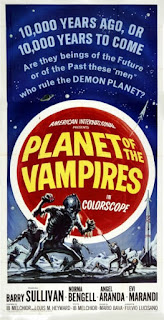Horror/Thriller
1 hour and 43 minutes
Rated: TV-MA
Written by: Jeff Howard & Mike Flanagan
Directed by: Mike Flanagan
Produced by: Trevor Macy & Melinda Nishioka
Cast:
Carla Cugino
Bruce Greenwood
Some games you play. Some you survive.
Netflix has become quite the alternative when it comes to network television over the past several years, producing hit shows like House of Cards, Narcos, and Orange is the New Black. But it is only been recently that they have been daring to try their hand in the world of cinema. And why not? Made-for-TV movies have been a thing since, well, since television was invented. Although the majority of their film content has been booed by cinema purists (quite literally, they were booed at Cannes this year), the dismissal of their original films seems to be a slippery slope that is one that serves no merit whatsoever. Why not assess their films on a case by case basis as one does for films at the cinema?
With a renewed resurgence in Stephen King adaptations: both The Dark Tower and IT saw adaptations released this year, as well as a made-for-TV re-adaptation of The Mist, and soon re-imaginings of Salem's Lot, Pet Sematary, and The Stand are due to come our way, it only makes sense the Netflix would want to grab ahold of some of one of the most popular writer in the world's content to make their own contributions to the mix. Gerald's Game, King's 1992 psychological horror novel, may have seemed like an odd choice for them to make. With a plot consisting of a protagonist confined virtually to one spot for the entirety of the story, alone and isolated, one might have written it off as an un-filmable project and as something that exists brilliantly and purely in the medium of literature. So how does Mike Flanagan's adaptation stand up?
The storyline itself, is brilliant. Flanagan makes the wise decision to follow the events of the Stephen King novel nearly verbatim - unlike some other King adaptations that have come out this year - only excluding minor elements and changing a few details in order to fit time and visual constraints that the medium adheres to. By doing this, Flanagan respectfully recognizes the elements that made this story one of the most frightening ever told by the master of the macabre. The changes also allow for the film's two lead actors to really be front and center and shine through for its entirety.
And shine they do. Carla Cugino and Bruce Greenwood are perhaps some of the most under appreciated talents working in cinema today. Both are recognizable and have made appearances in countless popular movies, but neither has achieved the profound recognition that they deserve. Their performances in Gerald's Game solidify this shameful fact. Greenwood, for starters, plays a rather unsympathetic and overtly misogynistic Gerald - the kind that was present in King's book. The difference is here, director Flanagan has made the decision to include Gerald's voice and presence throughout. He functions as both id and the ego of thought during the mind's most panicked and desperate of situations. Cugino similarly functions as the super-ego, counteracting and reminding one of the observable information, while also playing all three - struggling for her life, chained to a bed, desperate for an out. These two titans of actors contribute to the film's thrilling and horrific storyline, really amping up the tension, sympathy, and horror in the places that demand it.
Despite being a made-for-TV movie, Gerald's Game is shot gorgeously. There are certain sequences that are stunning to behold in both beauty and horror - often times both simultaneously. Cinematographer Michael Fimognari does a brilliant job in utilizing shots and lighting especially to play with the expectations of the audience and put them into the mindset of the film's protagonist. Is what we are seeing reality, or merely a panic-induced nightmare of horror? This similarly reflects the tone that was present throughout King's novel. Perhaps the only faux pas regarding the film's technical end would be a sequence near the film's beginning where the clear shadow of a person can be seen when it was clearly not meant to be seen. More than likely, this indivudal was a crewmember who unfortunately stood in front of a light source, saw they had done just that, and moved out of the way. While this is clearly an embarrassing mistake, it does not detract from the overall viewing experience due to its brevity, and if one were to really press their luck - they may try to argue that this clear mistake only adds to the overall tone that the film presses, that being the mindset of a woman gripping onto sanity as it slips away from her. Still, one has to wonder how an overt mistake like that was not caught by Flanagan, who also served as the film's editor.
The film's effects work are equally terrific. An eclipse darkened memory plays out with all the surreal qualities of a bad dream. A gory and intense climax is shown in all its bloody and beautiful glory. And of course, the film's antagonist, stands out like the most terrifying vision one has ever had in nightmares. To the big budgeted studio horror movies, and even the indie horror movies, who have relied too heavily on CGI over the past two decades or so, take note. Gerald's Game showcases how to make a terrifying and thrilling horror film with a storyline grounded in reality that largely utilizes practical effects.
With an incredible cast delivering some of the best - if not the best - performances of their entire careers, a frightening and intense storyline that adheres closely to the original source material, and a reliance upon believable and shocking effects work, Gerald's Game triumphs over its made-for-TV stigma by being an absolutely brilliant film. Even despite one glaringly stupid faux pas.
9/10



